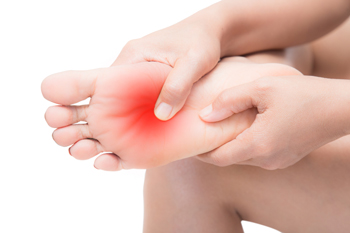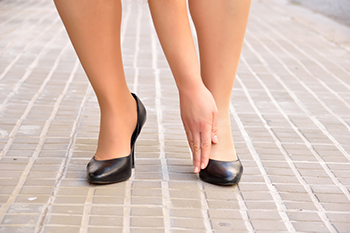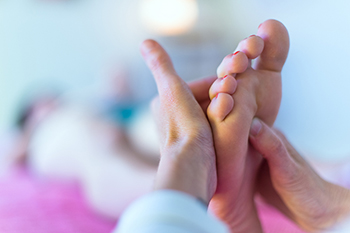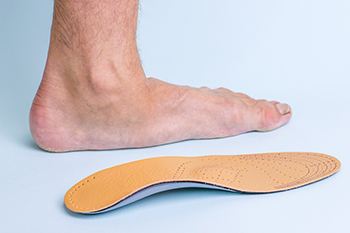
Diabetic peripheral neuropathy is a common complication of type 1 and 2 diabetes. It occurs when high blood sugar levels damage the nerves extending from the brain and spinal cord to various body parts, including the feet. This condition primarily affects the peripheral nerves, which control sensations and movements in the arms, legs, hands, and feet. Characteristics of diabetic peripheral neuropathy are numbing and tingling sensations, loss of feeling in affected areas, and burning or shooting pain. Additional symptoms include muscle weakness, coordination problems, or foot and leg complications. Treatment options may consist of medications to manage pain, exercise to improve strength and coordination, and lifestyle modifications to prevent complications. Studies suggest that low-level laser therapy for peripheral neuropathy may improve pain and other symptoms, such as sensory function. Laser therapy has also been shown to increase foot temperature, suggesting improved microcirculation. If you suffer from diabetic neuropathy, make an appointment with a podiatrist to discuss which treatment is best for you.
Neuropathy
Neuropathy can be a potentially serious condition, especially if it is left undiagnosed. If you have any concerns that you may be experiencing nerve loss in your feet, consult with Dr. Richard DiMario from Maine. Our doctor will assess your condition and provide you with quality foot and ankle treatment for neuropathy.
What Is Neuropathy?
Neuropathy is a condition that leads to damage to the nerves in the body. Peripheral neuropathy, or neuropathy that affects your peripheral nervous system, usually occurs in the feet. Neuropathy can be triggered by a number of different causes. Such causes include diabetes, infections, cancers, disorders, and toxic substances.
Symptoms of Neuropathy Include:
Those with diabetes are at serious risk due to being unable to feel an ulcer on their feet. Diabetics usually also suffer from poor blood circulation. This can lead to the wound not healing, infections occurring, and the limb may have to be amputated.
Treatment
To treat neuropathy in the foot, podiatrists will first diagnose the cause of the neuropathy. Figuring out the underlying cause of the neuropathy will allow the podiatrist to prescribe the best treatment, whether it be caused by diabetes, toxic substance exposure, infection, etc. If the nerve has not died, then it’s possible that sensation may be able to return to the foot.
Pain medication may be issued for pain. Electrical nerve stimulation can be used to stimulate nerves. If the neuropathy is caused from pressure on the nerves, then surgery may be necessary.
If you have any questions, please feel free to contact our office located in York, ME . We offer the newest diagnostic and treatment technologies for all your foot care needs.

When it comes to high heels, opinions vary widely. Some find them elegant and empowering, while others associate them with discomfort. If you belong to the latter group, it might be because you have not discovered the right heel height for your feet. Comfort varies from person to person, depending on foot shape, shoe type, and experience with heels. The average heel height is around 3 inches, falling into the mid-height range. Low heels are 1 to 2 inches, while high heels are 3 to 4 inches. Finding your ideal heel height may require some experimentation. It's a good idea to prioritize foot health and alternate between heels and flats. To measure heel height, place the shoe on a flat surface and measure from the bottom of the heel to where it connects to the shoe. If you would like to wear heels, it is suggested that you make an appointment with a podiatrist to get advice on wearing this type of shoe for your particular feet and prioritizing style and comfort.
High heels have a history of causing foot and ankle problems. If you have any concerns about your feet or ankles, contact Dr. Richard DiMario from Maine. Our doctor can provide the care you need to keep you pain-free and on your feet.
Effects of High Heels on the Feet
High heels are popular shoes among women because of their many styles and societal appeal. Despite this, high heels can still cause many health problems if worn too frequently.
Which Parts of My Body Will Be Affected by High Heels?
What Kinds of Foot Problems Can Develop from Wearing High Heels?
How Can I Still Wear High Heels and Maintain Foot Health?
If you want to wear high heeled shoes, make sure that you are not wearing them every day, as this will help prevent long term physical problems. Try wearing thicker heels as opposed to stilettos to distribute weight more evenly across the feet. Always make sure you are wearing the proper shoes for the right occasion, such as sneakers for exercising. If you walk to work, try carrying your heels with you and changing into them once you arrive at work. Adding inserts to your heels can help cushion your feet and absorb shock. Full foot inserts or metatarsal pads are available.
If you have any questions please feel free to contact our office located in York, ME . We offer the newest diagnostic and treatment technologies for all your foot and ankle needs.

A foot bath offers a myriad of health benefits that can enhance your overall well being. This ancient practice of immersing your feet in warm water has gained popularity in modern times. Foot baths have direct benefits for your feet. They soften and exfoliate the skin, preventing development of thick calluses. They also discourage bacterial buildup under toenails, cuts, and blisters, reducing the risk of infection. This is why pedicures often include a foot bath. Foot baths also aid in detoxification in the body and are beneficial for various medical conditions. Incorporating Epsom salt into your foot baths can help to manage muscle cramps, boost blood circulation, and reduce inflammation. Additionally, foot baths can also help to treat fungal infections, remove splinters, and provide foot pain relief. Essential oil foot baths add aroma therapeutic benefits to your soak. This can be beneficial in smoothing and moisturizing your skin, easing tired muscles, and reducing stiff joints. Soaking your feet in apple cider vinegar offers various health benefits as well, including treating fungal infections, soothing sore feet, and healing dry skin. If you would like to learn more about the benefits of foot therapy, such as foot baths, it is suggested that you make an appointment with a podiatrist.
Foot therapy is often necessary for those recovering from either foot deformities or foot injuries. If you have concerns regarding therapy, consult with Dr. Richard DiMario from Maine. Our doctor can provide the care you need to keep you pain-free and on your feet.
Most Common Injuries
People who are active or athletes are prone to a variety of injuries. Therefore, it is often important to take part in physical therapy in order to quickly get back on the right track.
What to Do When Injured
Physical Therapy – This specialized treatment will focus on the affected area, speeding up recovery and the overall healing process. It is a proven method that has helped millions of people return from any injury.
During physical therapy you will undergo regimented training to get back into full form. Training is often very difficult, especially at first when the foot feels weak. Physical therapy often involves:
Basic stretching and twisting exercises – getting the feet’s mobility and flexibility up.
Massaging – the therapist will massage the injured area in order to activate the muscles and relax them.
Strengthening Exercises – this allows the muscles in the affected area to regain their full strength, a vital step towards full recovery.
If you have any questions please feel free to contact our office located in York, ME . We offer the newest diagnostic tools and technology to treat your foot and ankle needs.

Custom foot orthotics are designed to meet unique structural and biomechanical needs, but they often require a break-in period. This means getting used to them gradually. The adjustment period varies for each person as your body has adapted to moving a certain way over the years. When you first wear them, custom orthotics might feel unusual, like standing on a hard ball with pressure on your arches. Some may feel great right away, like walking on clouds. However, it is crucial to break them in properly. Some tips to get used to orthotics include starting off slowly and wearing them for a few hours at first and then increasing wear time by one or two hours daily over a week. Other tips include reducing wear time if you experience discomfort, wearing them in shoes with the appropriate width and depth, and waiting until they are entirely broken in before engaging in physical activity. Adjustments can possibly be made if discomfort persists. If you are interested in learning more about whether you are a good candidate for orthotics and how to adjust to them, it is suggested that you make an appointment with a podiatrist to discuss this option.
If you are having discomfort in your feet and would like to try orthotics, contact Dr. Richard DiMario from Maine. Our doctor can provide the care you need to keep you pain-free and on your feet.
What Are Orthotics?
Orthotics are inserts you can place into your shoes to help with a variety of foot problems such as flat feet or foot pain. Orthotics provide relief and comfort for minor foot and heel pain but can’t correct serious biomechanical problems in your feet.
Over-the-Counter Inserts
Orthotics come in a wide variety of over-the-counter inserts that are used to treat foot pain, heel pain, and minor problems. For example, arch supports can be inserted into your shoes to help correct overarched or flat feet, while gel insoles are often used because they provide comfort and relief from foot and heel pain by alleviating pressure.
Prescription Orthotics
If over-the-counter inserts don’t work for you or if you have a more severe foot concern, it is possible to have your podiatrist prescribe custom orthotics. These high-quality inserts are designed to treat problems such as abnormal motion, plantar fasciitis, and severe forms of heel pain. They can even be used to help patients suffering from diabetes by treating foot ulcers and painful calluses and are usually molded to your feet individually, which allows them to provide full support and comfort.
If you are experiencing minor to severe foot or heel pain, it’s recommended to speak with your podiatrist about the possibilities of using orthotics. A podiatrist can determine which type of orthotic is right for you and allow you to take the first steps towards being pain-free.
If you have any questions please contact our office located in York, ME . We offer the newest diagnostic and treatment technologies for all your foot and ankle needs.